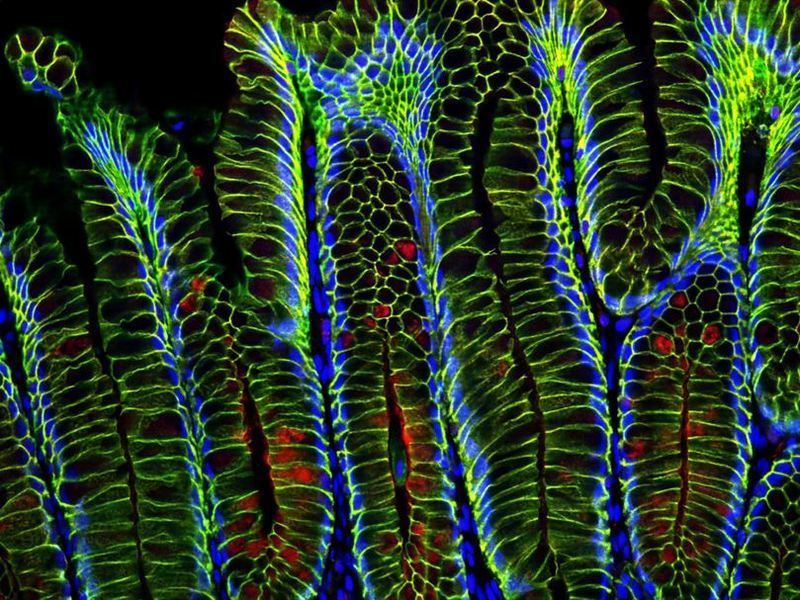Are stem cells the link between bacteria and cancer?
New mechanism of stomach gland regeneration reveals impact of Helicobacter pylori infection
Gastric carcinoma is one of the most common causes of cancer-related deaths, primarily because most patients present at an advanced stage of the disease. The main cause of this cancer is the bacterium Helicobacter pylori, which chronically infects around half of all humans. However, unlike tumour viruses, bacteria do not deposit transforming genes in their host cells and how they are able to cause cancer has so far remained a mystery. An interdisciplinary research team at the Max Planck Institute in Berlin in collaboration with researchers in Stanford, California, has now discovered that the bacterium sends stem cell renewal in the stomach into overdrive – and stem cell turnover has been suspected by many scientists to play a role in the development of cancer. By showing that the stomach contains two different stem cell types, which respond differently to the same driver signal, they have uncovered a new mechanism of tissue plasticity. It allows tuning tissue renewal in response to bacterial infection.

Cross section of stomach glands, showing the outline of individual cells in green and their nuclei in blue.
© MPI for Infection Biology
While it has long been recognized that certain viruses can cause cancer by inserting oncogenes into the host cell DNA, the fact that some bacteria can also cause cancer has been slower to emerge and much harder to prove. While it is now clear that most cases of stomach cancer are linked to chronic infections with H. pylori, the mechanism remains unknown.
Thomas F. Meyer and his colleagues at the Max Planck Institute for Infection Biology in Berlin have spent many years investigating this bacterium and the changes it induces in the cells of the stomach epithelium. In particular, they were puzzled how malignancy could be induced in an environment in which cells are rapidly replaced. They suspected that the answer might lie in the stem cells found at the bottom of the glands that line the inside of the stomach, which continually replace the remaining cells ‘from the bottom up’ – and which are the only long-lived cells in the stomach. Michael Sigal, a clinical scientist of the Charité – Universitätsmedizin Berlin, who joined the Max Planck team, overturned the established dogma to show that H. pylori not only infects the surface cells, which are about to be sloughed off, but that some of the bacteria manage to invade deep into the glands and reach the stem cell compartment. They have now found that these stem cells do indeed respond to the infection by increasing their division – producing more cells and leading to the characteristic thickening of the mucosa observed in affected patients.
They used different transgenic mice to trace cells expressing particular genes, as well as all their daughter cells. The results, published in Nature indicate that the stomach glands contain two different stem cell populations. Both respond to a signalling molecule called Wnt, which maintains stem cell turnover in many adult tissues. Crucially, they discovered that myofibroblast cells in the connective tissue layer directly underneath the glands produce a second stem cell driver signal, R-spondin, to which the two stem cell populations responded differently. It is this signal, which turned out to control the response to H. pylori: Following infection, the signal is ramped up, silencing the more slowly cycling stem cell population and putting the faster cycling stem cell population into overdrive.
These findings substantiate the rising awareness that chronic bacterial infections are strong promoters of cancer. 'Our findings show that an infectious bacterium can increase stem cell turnover', says Sigal. 'Since H. pylori causes life-long infections, the constant increase in stem cell divisions may be enough to explain the increased risk of carcinogenesis observed,' and Meyer adds: 'Our new findings shed light on the intriguing ways through which chronic bacterial infections disturb tissue function and provide invaluable clues on how bacteria, in general, may increase the risk of cancer'.




















































